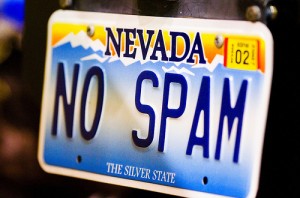 Here are seven essential steps that can keep your new email address free from spam – they will also help curb down future spam on an existing email address.
Here are seven essential steps that can keep your new email address free from spam – they will also help curb down future spam on an existing email address.
- Do not give your new email address to online forums or guestbooks.
- Do not allow your email client – webmail or Outlook based – to recognize images or accept HTML-based email. If you enable this, you run the risk of your email being sent to a spam server, which will validate your email address as working.
- Disguise and encrypt your email address as much as possible. If your email is yourname@yourname.com, always substitute something for the “@” symbol. For example, yourname(at)yourname.com and yourname(at)yourname.com will suffice. It will not hinder or confuse all of the bots out there, but the great majority of them will pass you by.
- Do you own your own domain? If so, most hosting companies will allow you to use a catchall function for your emails. This means that if someone misspells your email address, it will still go to you. If you register a secondary email address such as box2@yourname.com and it starts receiving spam, you can always block it, and you will still receive regular email at your master address.
- Only register for online forums and other websites using an axillary email address or find a website that will give you a disposable or temporary email address if you do not plan to join, but only read information on a website.
- Only use reputable anti-spyware and anti-virus programs to keep your computer safe. Many rogue programs are out there and will harvest the addresses in your address book and your own – and sell them and/or spam you themselves.
- Avoid using ANY toolbars at all cost. Many companies offer toolbars for your web browser for “convenience;” however, they too can harvest emails and sell them to spammers. They can even capture more private, sensitive information that you enter into any commercial websites you may use.

Do not trust any website blindly, even if they may seem legitimate to you. For the most popular companies out there, your email is more than likely secure, and you will have nothing to worry about.
You are on the safe side if you do not blindly trust the sites which want you to enter your email address. If you use your email address for direct contact with a serious business or company there is most likely no harm.
 Again, by all means, it is very important that you deactivate HTML emails. Most email clients and programs these days have built in spam filters – activate them as well so that no spam reaches your email inbox. When you aggressively block spam, you will only receive mails that are exclusively meant for you. If you run email on your own server, you may also want to consider the use of a blacklist. A blacklist will automatically block known spam emailers from contacting you. These blacklists are kept up-to-date and some of them can automatically update your server as well.
Again, by all means, it is very important that you deactivate HTML emails. Most email clients and programs these days have built in spam filters – activate them as well so that no spam reaches your email inbox. When you aggressively block spam, you will only receive mails that are exclusively meant for you. If you run email on your own server, you may also want to consider the use of a blacklist. A blacklist will automatically block known spam emailers from contacting you. These blacklists are kept up-to-date and some of them can automatically update your server as well.
Keep all of these steps and points in mind, and you will keep your new email address from receiving spam email – and cut down the amount of spam you receive in your current email box.
Leave a Reply
You must be logged in to post a comment.